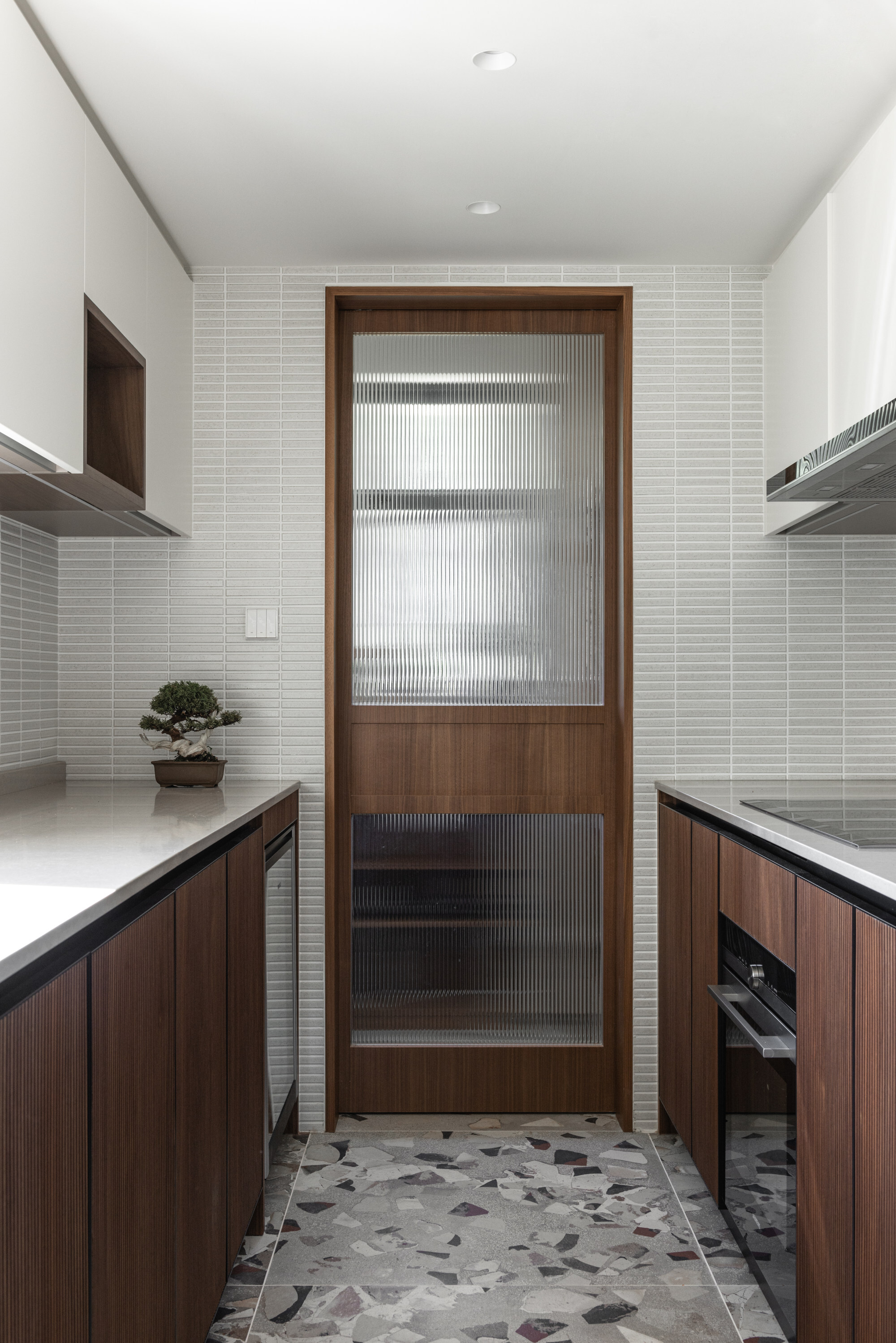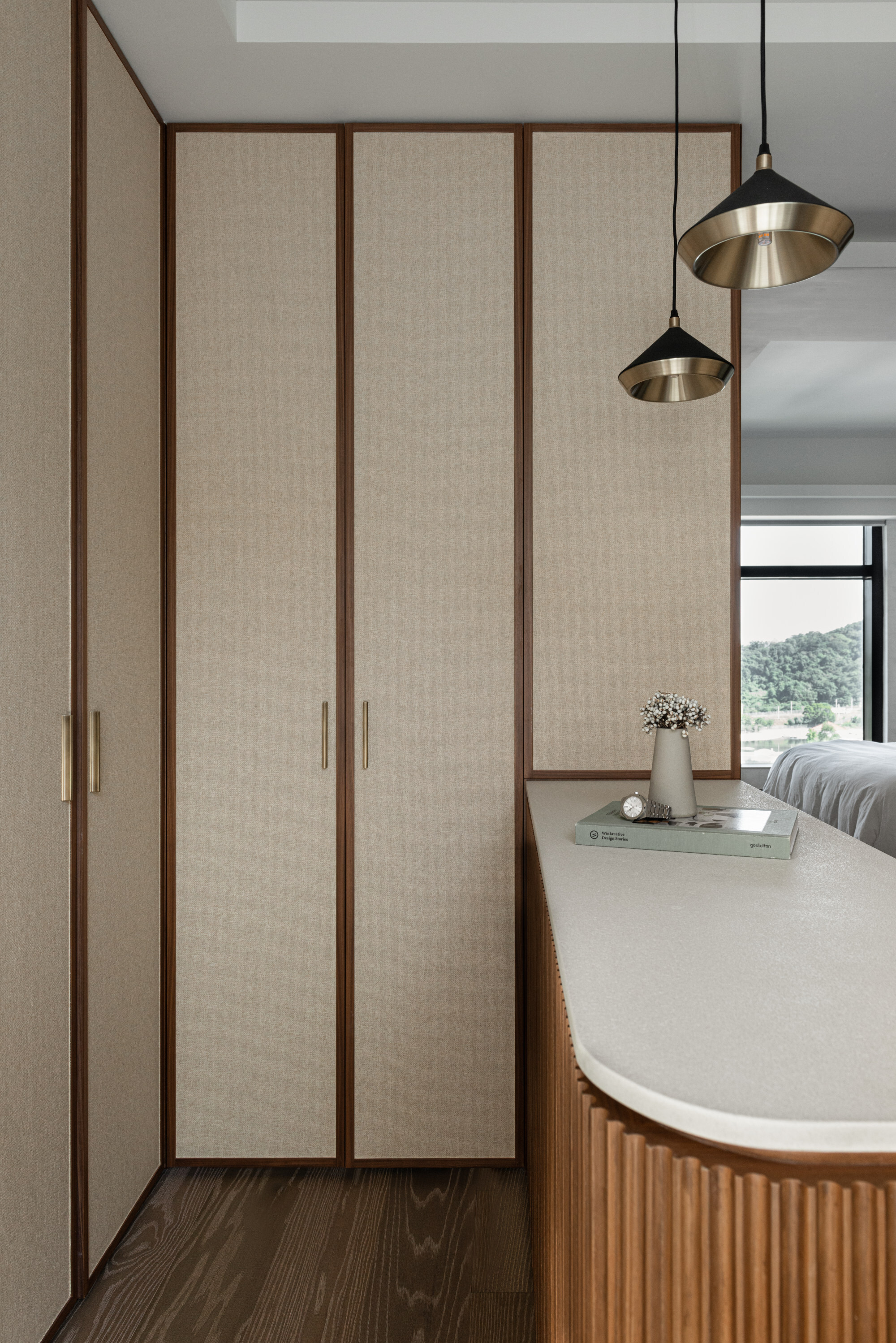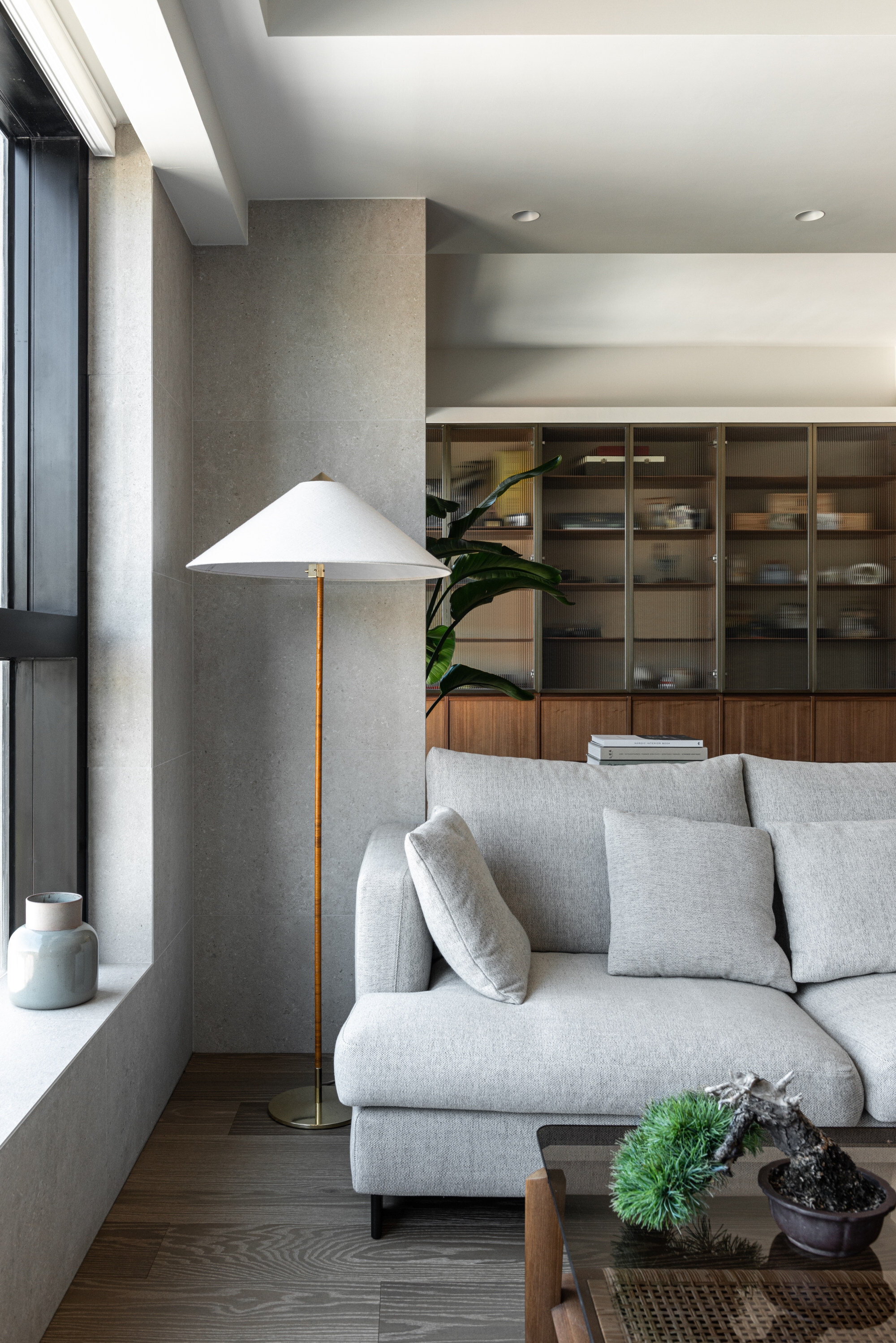
Hong Kong home marries Japanese, Scandinavian and mid-century style for a tranquil escape from the city
- A couple’s 1,460 sq ft flat in Tai Po was transformed into a tranquil retreat using a Japanese interpretation of Scandinavian style
- Woods, earthy tones and water and stone take centre stage, and the windows in the living room are devoid of curtains or blinds to maximise the impressive views
When asked by a couple to think up an aesthetic for their newly bought 1,460 sq ft (136 square metre) flat in Tai Po, in Hong Kong’s New Territories, that combined their love of nature and desire for calm and comfort, Yu-chang Chen and interior designer Yannes Cheng Hoi-yan, both of interior design studio hoo, presented them with a mood board headed “Japandi”.
“My clients chose to live in Tai Po years ago because being in nature really suits their lifestyle. They run a pet store and, after work, they like to retreat back home and just chill with their pets,” says Chen, hoo’s creative director. “So I wanted to create a calming interior for them using lots of natural materials and I thought this Japandi look, which for me is a Japanese interpretation of Scandinavian style, would be perfect for them.”
Pared back, with an emphasis on functionality, Japandi leans only slightly towards minimalism. Instead, elemental motifs take centre stage: warming woods, earthy tones and water and stone for reflection and balance.
After a five-month renovation completed last August, the calming inspiration board was realised: theirs is now a spacious one-bedroom, two-bathroom flat – the other two bedrooms having been converted into a dressing room and a relaxation zone off the living area.
Painting provides the colour palette, kitchen the centre in family home
Upon entry, expansive views of Plover Cove are revealed: to maximise the impact, the living room windows are devoid of curtains or blinds (see Tried + tested). The vistas have also been subtly opened up by another detail altogether.
The corner of the wall cabinet that runs along the length of the entryway has been rounded, taking 8cm (three inches) off the edge to offer an extended sightline through to the next window and adjacent seating area. It’s a genius hack that has transformed a boxy living room off the front door into an open space with inviting curves.
How an old juice factory was turned into a bright, breezy design workspace
Materials add to the air of tranquillity in the open living and dining area as well as the bedroom. Textured wallpaper in a limestone hue contrasts walls and doors in finely detailed walnut, and a lighter shade of oak warms the floor. Pure white is seen only in the kitchen, with its shiny countertops and upper cabinets setting off more walnut and a chunky terrazzo floor.
While the irregularity of the latter, made of composite materials, might seem out of kilter with the Japandi concept, luckily there is another Japanese term for that – wabi-sabi, often translated as “flawed beauty”, celebrates asymmetry and imperfection, especially in handcrafted objects made from natural materials.
Terrazzo also features on the walls of the guest bathroom and the en suite, cleverly tweaked into a longer, narrower and much more functional space. Changing its dimensions allowed the dressing room to be squared off to accommodate a three-door wardrobe and a built-in counter, not unlike a kitchen island, creating plenty of extra storage.
Hong Kong flat balances the industrial with a sense of home
Because the couple wanted to make a completely clean start in their new home, they opted to have hoo not only design the interior but also furnish the entire flat. Chen rounded out the Japandi concept by adding the distinctly Danish shapes of mid-century-style furniture and an oversized “slouchy” sofa for maximum comfort.
Clean and calming and filled with natural light reflecting off the sea, the flat seems light years away from the hustle and bustle of urban work life.
Although some may wonder at the complete artistic freedom afforded Chen, he credits his clients for a clear brief and says it’s not that they didn’t care.
“The husband used to work for an advertising agency,” says Chen, who also worked in advertising before transitioning to interior design. “So he was very particular and detail-oriented. But he’d had a lot of experience working with artists and designers and understood that you have to trust the creative people to do their thing.
“For me, that is a real gift.”

Living room
The sofa and matching cushions came from Tree (tree.com.hk) while the patterned cushion was picked up from H&M Home (hm.com). The coffee table was from Phantom Hands (phantomhands.in) and the rug was designed by hoo (hoo.com.hk).
The low television console was from Organic Modernism (organicmodernism.com). The floor lamp came from Gubi (gubi.com) and the brass table lamp from Oluce (oluce.com).

Dining area
The dining table was from Case (casefurniture.com) and the chairs from Carl Hansen & Søn (carlhansen.com). The light fitting above the table was purchased from Frama (framacph.com) while the pair of artworks came from The Poster Club (theposterclub.com) via hoo. The white wall light on the slatted walnut wall was from Allied Maker (alliedmaker.com).

Sitting area

Kitchen
Chunky terrazzo from The Room (161 Lockhart Road, Wan Chai, tel: 2598 1115) makes a statement floor in the white and walnut Binova kitchen (binovamilano.com).

Bedroom
For the bedroom, hoo custom made all of the fitted furniture. The pendant light came from Bert Frank (bertfrank.co.uk) while the limestone wallpaper was from Tat Ming Wallpaper (tatming.com).

Walk-in wardrobe
The dressing room features floor-to-ceiling wardrobe doors and a central table topped with composite stone, all custom designed and fitted by hoo. The pendant lights were from Bert Frank.

Guest bathroom

Tried + tested
To enhance the pared-back aesthetic, Yu-chang Chen of hoo used beige stone tiles for the vertical and horizontal areas beside the black window frames.
“It makes the whole window look a lot cleaner but it’s also much more functional,” he says. “[The owners] asked for more places to put plants and now the wider window sills are perfect for that.”
